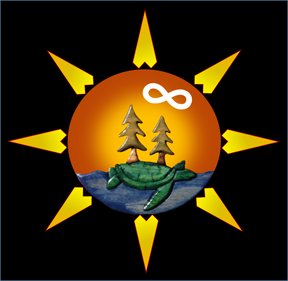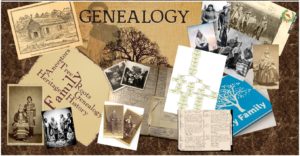Generally, genealogical research consists of digging through old civic or religious records, working backwards from yourself to your ancestors. Metis research adds a level of difficulty that some might find discouraging. Over the years, researchers have accumulated records they generously share with others. This page is not intended as an in-depth research guide but rather as a place to start.
Genealogy Services
The MNOC does not offer research services, however, we partnered with legitimate, experienced, and reliable genealogists who will be happy to help you retrace your Indigenous ancestry for a reasonable fee. If you are a genealogist and would like to be on our list, please contact us directly.
The big question: Should you hire someone to do your research or do it yourself?
HIRING A GENEALOGIST OR RESEARCHER
There are many good genealogists, many not-so good, and some who unscrupulously charge unreasonable fees. Some very good genealogists and researchers are NOT accredited, while some who are accredited have much less experience and knowledge. Your best protection is to ask about the person’s experience, and don’t be afraid to ask for references and/or for recommendations.
There is no set fee for genealogical research, however any genealogist who charges a fee should provide the following.
- A genealogical chart (family tree) with the names of your ancestors, their date and location of birth, death, & marriage, the names of their spouse(s), and when possible the names of the parents-in-law.
- For EACH ancestor: At least two (2) supporting valid civic and/or religious record, principally birth and death or census. (Visit Citizenship for a list of valid and invalid records)
- For EACH couple: a civic or religious marriage record
- Additional historical facts, including the source of the information provided.
BEWARE of so-called genealogists who charge a substantial fee and produce only internet-generated records or copies of pages from marriage repertoires and genealogy dictionaries. Those are NOT valid records.
DOING YOUR OWN RESEARCH
There was a time when that option was unthinkable, especially if you didn’t live near provincial or national archives. The Internet quickly became a primary research tool, and unfortunately, a maze of inaccurate and/or false information. Some sites like www.ancestry.ca can get expensive, however, if you are researching eastern genealogy this is a good place to start as it holds millions of valid and legal records. Caution: the accuracy of the databases and indexes depends on the indexer; exercise caution. There are also other sites that list genealogical information and will provide the records for a fee. If you follow family trees on such sites, always keep in mind that they are populated by other researchers, and often contain errors. The safest method is simply to look at many trees and how much documentation accompany each one.
THE MUST DO LIST :
- Read the records very carefully. It is very easy to make a mistake that may cause countless hours of research leading in the wrong direction. The Case of Jean Prévost, the French man, and Jean Prévost the Métis, is a typical case of mistaken identity.
- Be aware of errors that have been passed from generation to generation.
- Be aware of controversial ancestors. Just because someone says they were non-Indigenous or Indigenous does not necessarily make it so. Contact experience researchers when in doubt.
- Never post or share personal information about living persons or dated after 1920.
- Arm yourself with patience, lots of it
- For eastern Canada records, a basic knowledge of ancient French is an asset i.e. ff means ss! A basic knowledge of Latin is useful when accessing 1600s records!
- Save or print the ENTIRE document/record. MNOC does not accept cropped or extracted (partial) information, transcriptions, or abstracts (abbreviated summary of some information in the record)
- Keep track of your sources of your records if they are not visible on them.
- DO THE MATH! Watch for discrepancies, impossibilities, improbabilities, etc. Census are famous for wide pendulum swings in ages of the persons interviewed.
- Keep in mind that names were spelled differently and were inter-changeable. Ex: Jean Joseph or Joseph Jean. Many women had Marie as the first of a composed name: ex: Marie-Claire.
- Become familiar with “dit” names. The name people used rather than their legal name, or the name used to differentiate them from another person with the same name. Ex: Jacques Guerey dit Méhérenc Du Montmirel, who became Jaques Gueret dit Du Montmirel, then Jacques Dumont. Méhérenc was the patriarch's noble title, and Montmirel was the residence of his family in France. (and still standing today)
- Places listed in older records may no longer exist. Consult gazetteers and old maps.
- KNOW THE LINGO: Original/ primary records (the first recording of an event by the person who wrote it down) can be quite difficult to obtain. MNOC accepts derivatives (photocopy or digitized image of that document). The MNOC occasionally accepts secondary records (created by a person not present at the event) if they contain well documented, sourced, and reliable information. Ex: history books, legal reports, legal documents, land transactions, etc.
PAPER OR COMPUTER?
Some people prefer paper and others prefer a computer. There are many types of family tree software that allow you to enter all the information, attach pictures of people and records, create professional charts, reports, books, etc. The downside of computerized research is the lack of back up papers should something go wrong, and no back ups are done on a portable hard drive. Another issue is the fact that software changes constantly and keeping up to date may get costly.
READY TO START YOUR SEARCH?
- Print a genealogical chart (family tree)
- Visit your family and relatives to start a family tree, entering as much primary information as possible (DOB, DOM. DOD, etc.)
- Seek family stories, photographs, bibles, artifacts
- Ask relatives for church and civil records to start your collection
- Look for various records: census, scrip, government issues, school, newspapers, death, military, wills, notaries, land or probate.
- Once you have records, decide whether you will document your search on paper or computer.
Supporting Documents: Civic or church records confirming the blood connection (or child adoption) through every generation, from a person to his/her direct Aboriginal ancestor. Your ancestor might be described as Indian, Inuit, Métis, native, indigenous, savage, infidel, slave,* White-Indian, metis, metif, métissé, half-cast, half-breed, chicot, burnt-wood, etc. Union may consist of: cohabitation, country-style marriage, traditional union / marriage, religious marriage, civil marriage, etc. Note: Records from Tanguay, Jetté, Drouin dictionary, etc., are listings of genealogies and lineages only. They are not accepted as valid records linking generations.
* The term “slave” was used to identify the Indian wife and/or children of a white man, especially in strongly influenced religious settlements where Indian/White marriages were frowned upon, or tolerated because the husband was an influential member of the society.
Historical Genealogical connection: historical blood connection to an Aboriginal and European couple. The Métis were traditionally children of Indian* women and European men** who were Fishermen, Voyageurs, Fur Traders, Winterers, Interpreters, Soldiers, Explorers, Farmers and Settlers. Many Métis children were raised in their maternal Indian tribes, where they may or may not have settled later in life, and may have returned there from time to time, for indefinite periods.
*The term Indian is used in its historical context. **There are some instances where the mother was European and the father was Indian.
Verifiable connection: Some Métis were not identified as such on any documentation; however, it is possible to confirm his/her existence through verifiable genealogical connection to an Aboriginal & European union. In rare cases where paper-based documentation is not available, and in respecting our Aboriginal oral traditions, the sworn affidavit of an Elder who has known, over the course of many decades or a lifetime, an individual or family as being Métis shall be considered.
Genealogical connection through Adoption: formal or cultural adoption of a non-Métis minor child into the Métis community, lifestyle, and culture. Upon reaching age of majority, the individual retains the option to remain registered with the MNOC.
RESOURCES
There are thousands of websites, blogs, and Facebook pages dedicated to genealogy. As with any online source, caution is a must.
- Ontario Genealogy Records Online: http://www.genealogysearch.org/canada/ontario.html
- Canadian Genealogy & History: http://www.islandnet.com/~cghl
- CanadaGenWeb : http://www.rootsweb.ancestry.com
- Mes Aieux: https://www.mesaieux.com/
- Atlas of Canada website http://atlas.nrcan.gc.ca/site/english/index.html
- Geographical Names of Canada http://geonames.nrcan.gc.ca
- Ontario Genealogical Society Ontario Locator http://www.ogs.on.ca/branches/ontariolocator.php
- Library and Archives Canada: http://www.collectionscanada.gc.ca/index-e.html
- Canadian Council of Archives: http://www.cdncouncilarchives.ca
Newspapers online: http://www.collectionscanada.gc.ca/newspapers-at-lac/index-e.html
GUIDES & GUIDELINES
- Genealogy and the Law in Canada. Wilkinson, Dr. Margaret Ann. Toronto: Ontario Genealogical Society, 2010.
- Professional Genealogy: a manual for researchers, writers, editors, lecturers and librarians. Mills, Elizabeth Shown, editor.
- Using Forms for Canadian Genealogical Research. Smart, Susan and Clifford Duxbury Collier.
Toronto: Ontario Genealogical Society, 2006. - Genealogy, Geography and Maps. Douglas, Althea. Toronto: Ontario Genealogical Society, 2006.
- The Beginners Guide to Ontario Genealogy. Dunsford, Fraser.Toronto: Ontario Genealogical Society, 2007.
- Discover Your Metis Ancestry: a beginners Guide. Roberts, Dr. John. Toronto: Ontario Genealogical Society, 2008
ORGANISATIONS
- Association of Professional Genealogists (APG) http://apgen.org
- Board for the Certification of Genealogists http://bcgcertification.org
- The National Genealogical Society at http://www.ngs.genealogy.org




